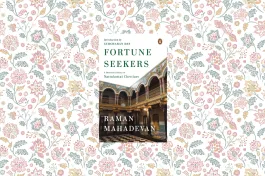What do we really mean when we say that innovation drives progress? That deceptively simple conviction—that prosperity depends on a self-renewing cycle of ideas—has become the central article of faith in modern economics. It underlines everything from national research and development policies and startup incubators to the World Bank’s “knowledge economy” reports.
When the 2025 Nobel Prize in Economic Sciences was awarded to Joel Mokyr, Philippe Aghion, and Peter Howitt “for explaining innovation-driven growth”, the committee was not just honouring three scholars. It was consecrating an entire way of seeing history: that human welfare advances when societies lower the barriers to discovery, and that growth once properly organised, can sustain itself indefinitely.
That faith was not born with this year’s laureates. It emerged slowly through a half-century of reimagining the mechanics of progress within economics itself. When Robert Solow built his growth model in the 1950s, technology appeared only as an unexplained residual— “a measure of our ignorance”, he called it (Solow 1956). Economists could measure the contribution of machines and labour, but not the spark that made them more productive.
Mokyr’s account reimagines the Industrial Revolution as an alliance of science, skill, and faith in improvement.
It would take several decades before economists found a way to bring that spark inside the model—a shift marked by the work of Paul Romer in the 1980s (Romer 1986). By the early 1990s, Philippe Aghion and Peter Howitt built on Joseph Schumpeter’s vision of “creative destruction”, showing through formal models that capitalism’s turbulence could generate steady progress (Aghion and Howitt 1992).
Joel Mokyr, working from the opposite direction as an economic historian, supplied the long-run backstory. Why Europe, centuries earlier, developed the institutions and beliefs that made continuous innovation possible. In The Gifts of Athena and A Culture of Growth, he argues that “useful knowledge”—the convergence of propositional understanding (why things work) and prescriptive technique (how to make them work)—and a culture that prized open inquiry made sustained innovation possible (Mokyr 2002; Mokyr 2018). Mokyr’s account reimagines the Industrial Revolution as an alliance of science, skill, and faith in improvement.
Together, these thinkers shaped a modern conviction: that knowledge naturally accumulates, disruption refines, and growth, if managed well, can renew itself indefinitely.
From Endogenising Progress to Creative Destruction
Romer’s insight was simple and powerful: what if ideas behaved like capital? Knowledge is non-rivalrous and durable, and it can be shared and reused at low marginal cost. When he placed ideas within the blueprint of production, growth became an endogenous outcome—the economy could in principle generate its own dynamism (Romer 1986). Education, research, intellectual property and entrepreneurship became measurable inputs. Policy could now plausibly “optimise” growth. Governments could now aspire to engineer growth itself.
That was more than a technical correction. It reframed how economists imagined society. But formulas have a way of turning metaphors into laws. By translating creativity into equations, the messy contingencies of discovery, curiosity, conflict, resistance, receded from view, replaced by smooth curves of accumulation. Innovation became destiny.
Instead of treating disruption as crisis, Aghion and Howitt showed that instability itself could sustain prosperity.
If Romer had given economists a model of how ideas accumulate, Philippe Aghion and Peter Howitt offered a way to think about how they collide. Building on Joseph Schumpeter’s intuition that capitalism evolves through “creative destruction” (Schumpeter 1942), they translated this vivid metaphor into equations. In their world, economic progress unfolds as a sequence of small revolutions (Aghion and Howitt 1992). Each new innovation raises the quality of goods and methods, but in doing so it renders the old ones obsolete. Growth, therefore, is not the smooth ascent of an extending stockpile, it is a restless process of renewal and ruin.
The translation from metaphor to mathematics changed more than the texture of theory. It gave turbulence a logic. Instead of treating disruption as crisis, Aghion and Howitt showed that instability itself could sustain prosperity. The same cycle that destroys jobs, firms, and technologies also pushes society toward higher productivity and living standards. In the elegant balance of their model, destruction became the precondition of progress.
Their later work refined this vision further, exploring the delicate balance between competition and innovation (Aghion, Antonin, and Bunel 2021). If markets were too closed, monopolies would stifle new entrants. If they were too open, profits would vanish and investment would dry up. Somewhere between the two lay an “inverted-U” of optimal dynamism—just enough rivalry to spur invention, not enough to kill it. It was a theory of capitalism as a self-regulating organism, one that could perpetually renew itself if nudged in the right way.
Aghion and Howitt offered policymakers a language of optimism, that creative destruction, if managed well, could reconcile dynamism with stability.
The appeal of this framework was immediate and enduring. Aghion and Howitt offered policymakers a language of optimism, that creative destruction, if managed well, could reconcile dynamism with stability. Economists could now speak of “frontier firms”, “innovation ecosystems” and “inclusive growth” with the assurance that each disruption, however painful, would eventually yield collective gain.
Yet in formalising Schumpeter’s drama of innovation, something else quietly disappeared—the human and historical substance of destruction itself. The factory closures, the dislocated workers, the degraded landscapes, all were abstracted into equilibrium. The violence of transformation became just another variable in the calculus of efficiency. It was a remarkable feat of intellectual synthesis, but also one that revealed the limits of abstraction.
The Culture of Useful Knowledge
To recover that human texture, of the histories of experiment, conflict, and belief that the equations left out, Mokyr turned to the past. Where Aghion and Howitt captured innovation in the language of mathematics, Mokyr turned to the vocabulary of history and culture. He wanted to know why Europe, after millennia of stagnation, had suddenly entered a self-sustaining cycle of technological change. His answer lay not in resources or geography, but in a revolution of belief, a transformation in how people imagined the relationship between knowledge and improvement.
In The Gifts of Athena (2002), The Enlightened Economy (2010), and A Culture of Growth (2018), Mokyr describes what he calls “useful knowledge”—an alliance between understanding how the natural world works and knowing how to manipulate it. He distinguishes between propositional knowledge (“why something works”) and prescriptive knowledge (“how to make it work”). The breakthrough of the Industrial Enlightenment, in his account, was that these two forms finally converged. The craftsman and the natural philosopher began to speak to one another. Experiment was no longer a curiosity, it was a calling.
The world Mokyr reconstructs is an idealised Europe, a republic of reason unshadowed by the colonial and extractive circuits that sustained it
Mokyr’s Europe is a civilisation intoxicated with improvement. From Francis Bacon’s vision of science as the handmaiden of utility to the transnational “Republic of Letters”, he traces the rise of a culture that prized openness, debate, and practical experimentation. The Industrial Revolution, in Mokyr's retelling, was as much a moral project as a mechanical one. Progress depended less on capital or conquest than on a collective faith that knowledge, once freed from dogma, would generate material plenty.
It is a deeply persuasive story and one that fits neatly with the models of endogenous growth. Mokyr provides the longue durée prelude that Aghion and Howitt’s equations assume but cannot describe. The cultural conditions that make innovation continuous.
Yet that very harmony invites reflection. The world Mokyr reconstructs is an idealised Europe, a republic of reason unshadowed by the colonial and extractive circuits that sustained it—the Atlantic slave economies, the plunder of Asian trade, the appropriation of raw materials and labour from distant colonies that fed the very industries he celebrates. His “useful knowledge” is an Enlightenment without empire. What remains unexamined is how the same faith in improvement travelled through conquest, slavery, and resource drain, linking the optimism of the metropole to the dispossession of the periphery. If Mokyr gave the Enlightenment a narrative of origins, Oded Galor offered growth theory its narrative of destiny.
The Dream of a Unified History
By the time the Nobel Committee honoured Mokyr alongside Aghion and Howitt, it was effectively recognising a single intellectual formation. The belief that innovation, once liberated, can propel humanity forward indefinitely. In recent years, that faith has taken an even more ambitious form. The claim is that this trajectory can explain not only modern growth, but the whole of human history.
This ambition finds its most systematic expression in Oded Galor’s Unified Growth Theory (2011). Galor seeks to collapse the long arc of economic development—from the Malthusian era of stagnation to the Industrial Revolution and beyond—into a single, continuous process. In his model, population, human capital, and technology interact in a self-reinforcing cycle. More people mean more potential innovators, greater innovation raises productivity, higher productivity enables investment in education, and education, in turn, accelerates innovation further. Growth becomes not a sequence of accidents but a predictable evolutionary system, the eventual triumph of learning over limitation.
Modern growth theory built its elegance by omitting whatever could not be expressed in equilibrium terms such as power, coercion or the uneven geography of capitalism.
For economists, this is deeply satisfying. It fulfils the discipline’s oldest aspiration, to turn history into a system of laws. By converting the irregular, conflict-ridden story of human development into a general equilibrium, unified growth theory offers a vision without rupture. The model’s appeal lies not in its realism but in its coherence. It makes the world intelligible as an internally consistent mechanism of progress.
Yet the very clarity of that vision depends on certain silences. It abstracts from the discontinuities through which modern growth was actually forged such as forced migrations, colonial trade circuits, the dispossession of agrarian labour, and the ecological frontiers opened and exhausted to feed industrial expansion. These are not “exogenous shocks” to the growth process, they are its constitutive conditions. Their absence is not accidental but methodological. Modern growth theory built its elegance by omitting whatever could not be expressed in equilibrium terms such as power, coercion or the uneven geography of capitalism. This was not cynicism, it was method. The exclusion of conflict made possible the internal consistency that gives economics its authority. But it also produced an epistemology that naturalises contingency and makes the historical victory of one social order for the unfolding of universal reason.
Innovation and Its Discontents
What all these frameworks share—from Romer’s endogenous growth to Galor’s unified history—is a faith that innovation arises from within the system itself. Once the right incentives and institutions are in place, progress unfolds as an internal dynamic. But from the vantage of the periphery, innovation has never been an internal property. It has always been a relation of dependence.
Political economists of development and technology have long show that the ability to innovate is conditioned by a nation’s position in the global hierarchy of production. Scholars of late industrialisation—from Alice Amsden and Ha-Joon Chang to Linsu Kim and Keun Lee—demonstrated that the most successful “latecomers” did not simply liberalise markets or wait for creative destruction to work its magic (Amsden 2001; Chang 2002; Kim 1997; Lee 2019). They built capabilities deliberately by protecting infant industries, reverse-engineering imported technology, using state finance to buy learning time.
Others, such as Sanjaya Lall, Carlota Perez and José Cassiolato, traced how global value chains and technological paradigms structure that learning—assigning design and R&D to the core, assembly to the semi-periphery, and resource extraction to the periphery. (Lall 1992; Perez 2002; Cassiolato, Lastres, and Maciel 2003) The geography of innovation mirrors the geography of power.
Every technological frontier rests on externalised costs: the cotton that fed Manchester’s mills, the cobalt that powers electric cars, and the data extracted from billions of users to train AI systems.
This alternative episteme does not deny that ideas matter, it insists that ideas travel through infrastructures of inequality. It begins not with the production function but with the conditions of production—land, labour, and access to knowledge. From Marx’s insight that machinery embodies “dead labour” (Marx 1976) to contemporary analyses of data colonialism (Couldry and Mejias 2019), it views technology as a social relation, not a neutral stock of techniques. Progress here is contingent, negotiated and reversible. The question is not how knowledge grows but who gets to accumulate and deploy it.
Seen from this perspective, the language of “endogenous” growth looks less like explanation than amnesia. It forgets that every technological frontier rests on externalised costs: the cotton that fed Manchester’s mills, the cobalt that powers electric cars, and the data extracted from billions of users to train AI systems. What appears as self-sustaining innovation is, in practice, a continuing transfer of value and risk from the margins to the centre.
The New Inevitability
The same faith in inevitability now shapes the way we speak about artificial intelligence (Benanav 2022). AI is described as an unstoppable wave, a general-purpose technology destined to remake work, politics, and knowledge itself. Regulators are urged to “keep up”, firms to “adapt”, and workers to “reskill”. The assumption is familiar. Technology advances autonomously and society can only respond.
The challenge for the Global South is not to emulate the trajectories that current growth theory universalises, but to imagine forms of technological change that expand capability without reproducing dependency.
Yet the geography of this new revolution repeats the old pattern. The minerals that feed data centres come from extractive frontiers, the labour that trains algorithms is precarious and invisible, and the governance of platforms rests with a handful of global monopolies. The belief in inevitability conceals these relations of design and power. It turns political choices about ownership, distribution, and purpose into technical constraints.
To question that inevitability is not to romanticise the past or to reject progress. It is to recall that every “innovation system” is also a system of governance, deciding whose knowledge counts and whose labour is expendable. The challenge for the Global South is not to emulate the trajectories that current growth theory universalises, but to imagine forms of technological change that expand capability without reproducing dependency.
The Nobel presentation itself invoked the Luddites, the 19th century textile workers who smashed machines in protest against the new factory system. They are often remembered as being hostile to technology. Yet their complaint was never against invention per se—it was about the loss of control over how new machines were used, who profited from them, and whose livelihoods they displaced. Their petitions asked Parliament to regulate the introduction of machinery that undermined skilled labour and customary rights.
Two centuries later, that question still resonates. We continue to debate whether technological change should be governed by markets, by states, or by social compacts that protect those most exposed to disruption. The 2025 Nobel Prize honours economists who showed how innovation fuels growth. Perhaps the more difficult task now is to build institutions that answer the question the Luddites once raised in their own way: what kind of progress is worth pursuing, and for whom?
Rohith Jyothish is an assistant professor at the Jindal School of International Affairs, O.P. Jindal Global University.









